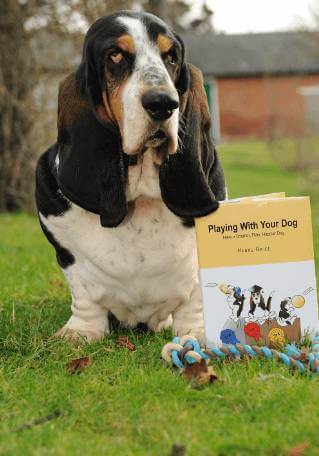There’s nothing more heart breaking for an owner to hear the cry of their dog when they leave the house. For others, they may return to find the dog has chewed up their belongings. And, in some serious cases I’ve dealt with, dogs have even self-mutilated themselves due to the stress of being left alone.
How can owners overcome separation anxiety?
It’s important to teach any dog that it is OK to be left alone – this starts right from the very moment you bring your dog home – whether that’s from the breeder or rescue centre. Research from The Animal Behaviour Society shows most dogs’ stress response occurs very shortly after the owner’s departure (from zero to 30 minutes).
So, there are a number of things an owner can do to help.
Tips to help dogs home alone
- Act now: Separation anxiety is a common issue as dogs are social creatures. Never just leave your dog without training them and expect them to deal with it; learning independence so the dog can cope with owner absences takes time, patience, and consistency. As many owners are still working from home at the moment, now is the time to start your planned departures training in advance of returning to the office.
- Planned departure training: Encourage your dog to settle in their bed while you work from home. Initially you might need to put their bed by your feet but aim to gradually move it further away and reward your dog for staying in it. Eventually, the bed can be positioned the other side of a baby gate and then a closed door. Note: you may want to consider changing your dog’s bed and or the area he’s left in, as some dogs quickly build a negative association with where they are left when the owner leaves the house (e.g. the lounge) or even their bed. Changing the area they are left or providing a new bed may help overcome this where building in planned departures training.
- Triggers: Your dog will learn your routine whether it’s picking up keys or putting on your coat. Make a list of all the things that your dog appears to react to and rank these from ‘most’ response (e.g. panting, pacing, yawning, vocalisations) to ‘least’ response (e.g. there are no obvious signs of unease). Practice moving these trigger objects – working from least to most – regularly to help break the association between your departure cues and their fear. Repetition and consistency are key.
- Gesture leaving: Spend time in another room or outside away from your dog for very short periods of time, videoing to check whether they settle. If they can’t, you’ll need to help them get used to you disappearing for just a few seconds and build this time up very slowly over weeks and months. Rushing this process can create setbacks.
- Alone time: Help your dog get used to not being your constant shadow by using a baby gate and shutting this momentarily if you get up to make a cuppa or leave the room, enabling them to build confidence.
- Lighting: Consider lighting which can be calming for dogs particularly if they’ve associated the dark with your absence. Keep lighting natural with soft daylight hues by day, transitioning to warmer hues in the evening. Dim light is best and helps promotes relaxation. If your dog is easily triggered into barking where they can see outside (e.g. passers-by or wildlife) then shut the curtains/draw blinds or purchase some opaque film to reduce vocalisations and help promote calmness.
- Be mindful: Most modern lighting fluctuates or flickers but avoid lights with a high-frequency or intensity flicker which can have a detrimental effect on pets. Try not to cast shadows or reflections on surfaces. These could elicit unwanted behaviours such as fear or shadow chasing which may be more prevalent in particular breeds such as Border Collies and Spaniels. As dog’s see the world through their nose, you could also consider purchasing a Dog Appeasing Pheromone (see Young-Mee et al., 2010) plug-in, spray or dog collar to help promote a sense of calm.
- Music: When your dog is napping, munching on a tasty chew, or enjoying a gentle stroke from yourself, get them used to hearing some calming music playing in the background. This can create an auditory anchor – where we create a memory that can help to induce a sense of calm. It can also be helpful in reducing any ambient noise which may then prompt the dog to vocalise. Once you have created a positive association to the music, you can then integrate this when practicing your planned departure training to encouraging settling.
- Distraction: If you can, aim to leave your dog on their own every day. You can place an old t-shirt you’ve worn into your dog’s bed and try giving them a well-packed food toy filled with super-tasty treats they can work at, enabling you to slip out quietly. Licking and chewing can help promote ‘happy hormones’. Be careful though, as sometimes these items may become a trigger in themselves, meaning the dog may get distressed when you give them a chew because this has become associated with you leaving. This can happen where the dog has historically been given a chew or food toy before the owner leaves but the dog’s anxiety has gone untreated and now worsened. Often in such cases owners will return home to see the food item has been untouched.
- Getting it right: There isn’t a quick fix to leaving your dog alone. Treat these tips as little nuggets which can all help but be aware of other factors that can contribute to distress such as the dog’s breed, age, gender, health, and previous learning experiences to name but a few.
If you are experiencing problems with your dog being left, then do seek the support of a certified animal behaviourist. Check out the Animal Behaviour & Training Council for a list of practitioners. Alternatively, contact us; [email protected].
Learn more about our classes

Get Hanne's book, clothing and more
Hanne has a number of publications including her book Playing With Your Dog to help owners work out the games that are best suited for their pet to play throughout his life, from puppyhood to old age, available from Amazon. Check out Hanne's range of contemporary casuals The Collection – for pet lovers made from recyclable, organic materials that are sustainably sourced.

